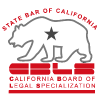Lien-stripping is the process of bifurcating (splitting) a secured claim into two separate claims, the secured portion and the unsecured portion. For instance, you have a home that is worth $500,000 and you have a first mortgage balance of $300,000 and a second mortgage balance of $300,000. Since the house is only worth $500,000 and the second mortgage is partially secured in the amount of $200,000 and partially unsecured in the amount of $100,000, the unsecured portion would be “stripped off” and treated as a general unsecured debt. Through a Chapter 13 you could split these claims into these two categories and you would be required to pay the secured portion the $500,000, but the unsecured portion could be paid anywhere between 0-100% depending on many other factors with the difference being discharged at the conclusion of your plan.
A similar process can be done with a any loans on vehicles called a “cram-down”. However, there are two notable differences: 1) you can cram down any loan on the vehicle (unlike lien stripping where you can only strip liens that come after the first mortgage); and 2) the loan does not need to be entirely unsecured. How this works is that your secured loan amount is crammed down to the value of the vehicle, and anything above this is treated as an unsecured debt and paid pro rata with the other unsecured creditors in your case.
Related posts:
- California Homestead Exemption: $300k, $600k… or less?
California Homestead Exemption: Minimum of $300k and Maximum of $600k The California homestead exemptions allow... - How to Keep a Vehicle in Bankruptcy through §722 Redemption
What debts, if any, can be reorganized or modified in a Chapter 7? In the... - How to Avoid a Lien in Bankruptcy
Table of Contents What is a judgment lien? Determining whether a lien can be avoided...









